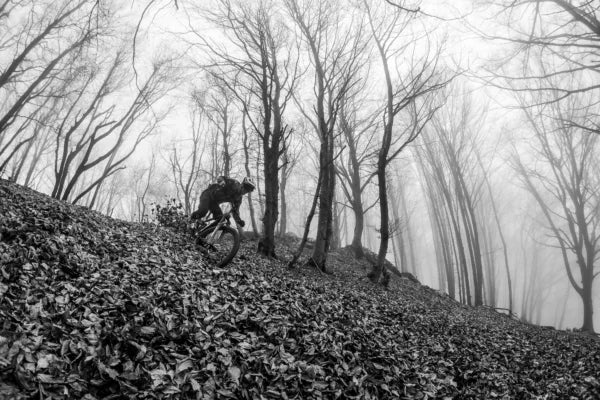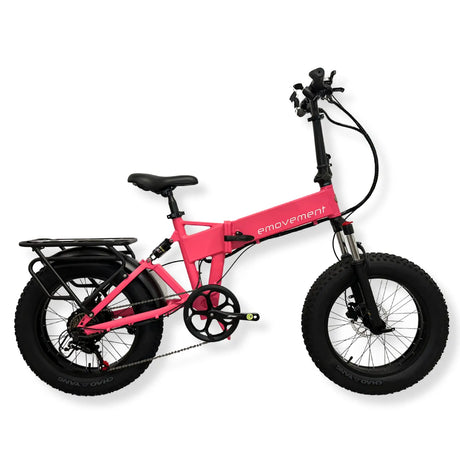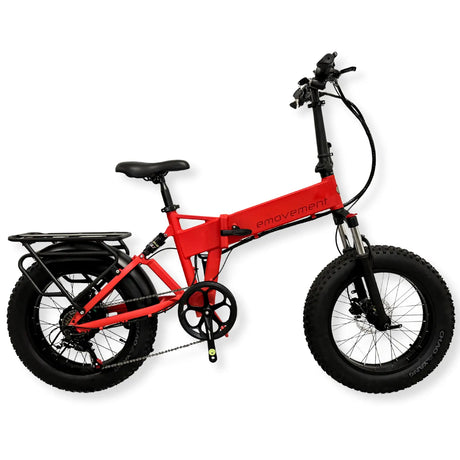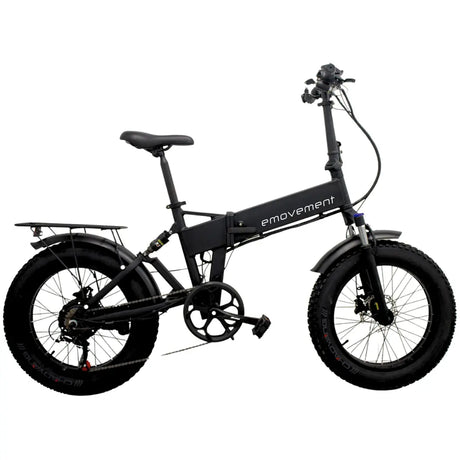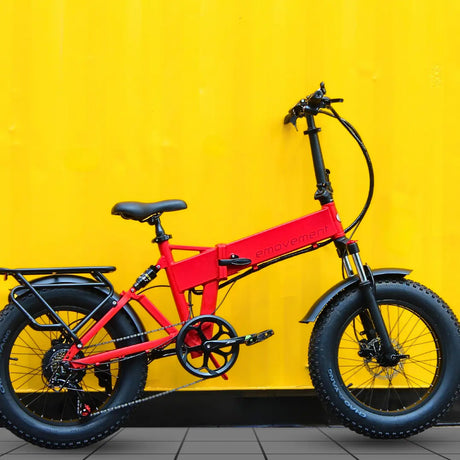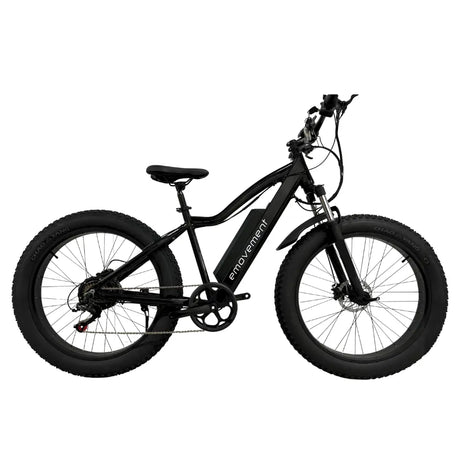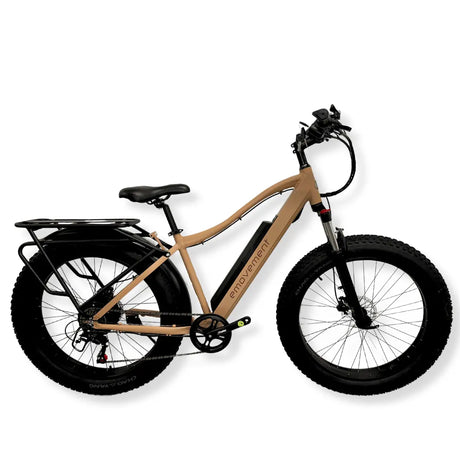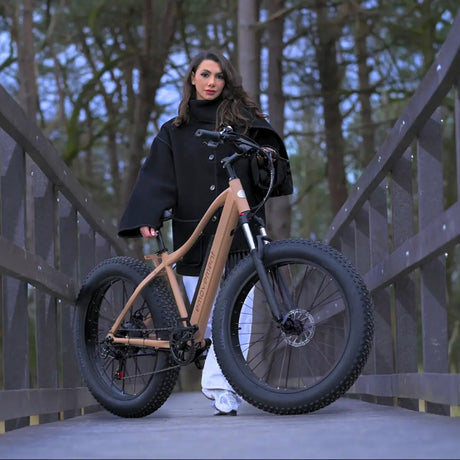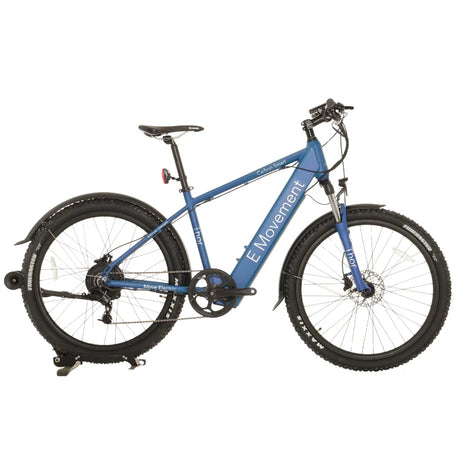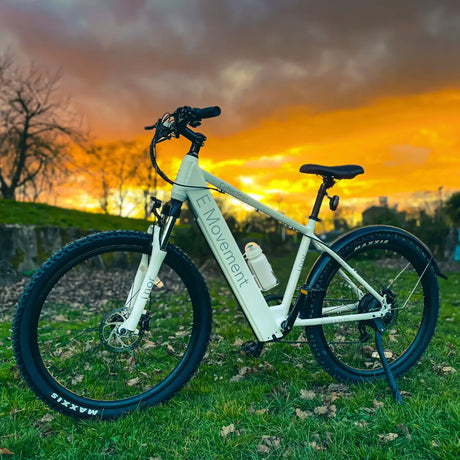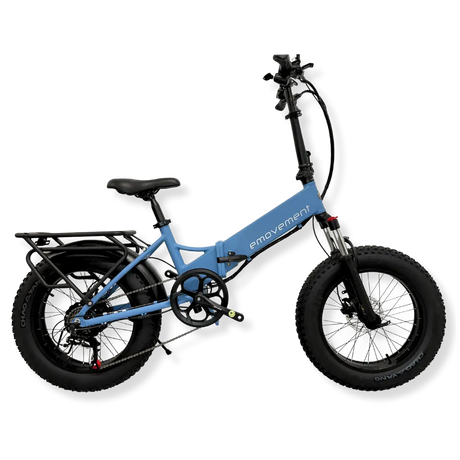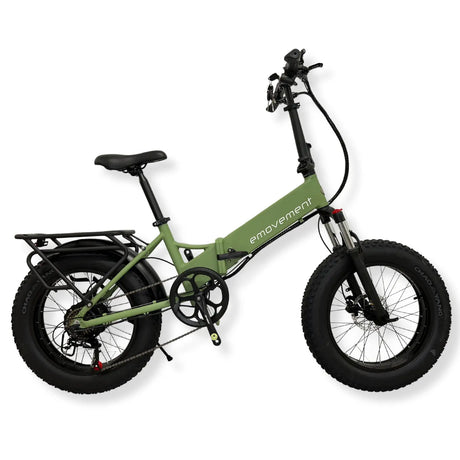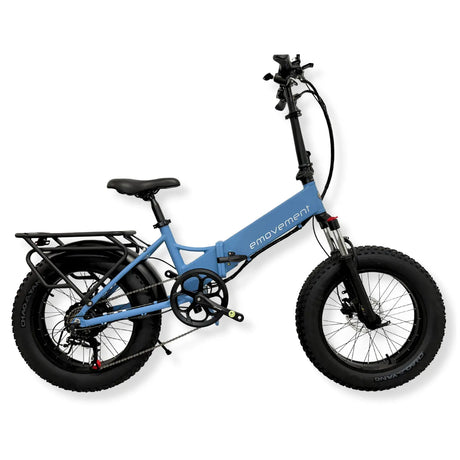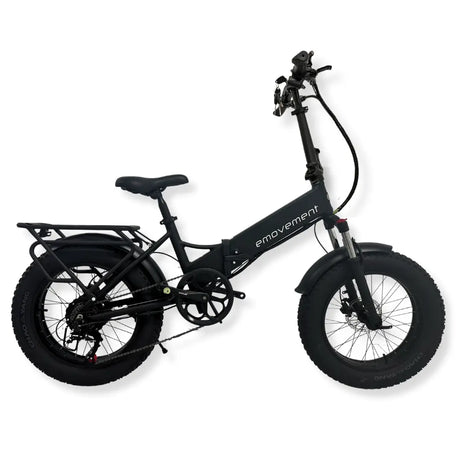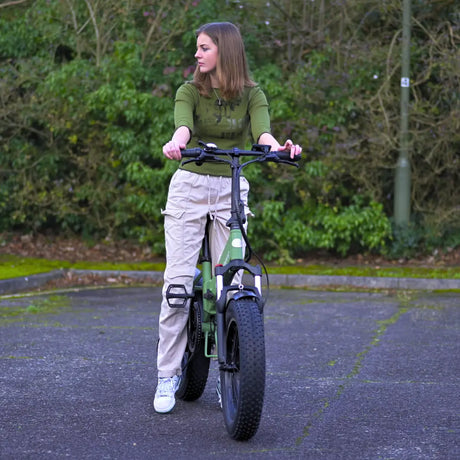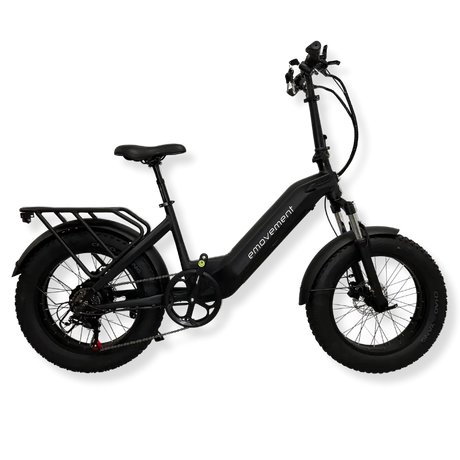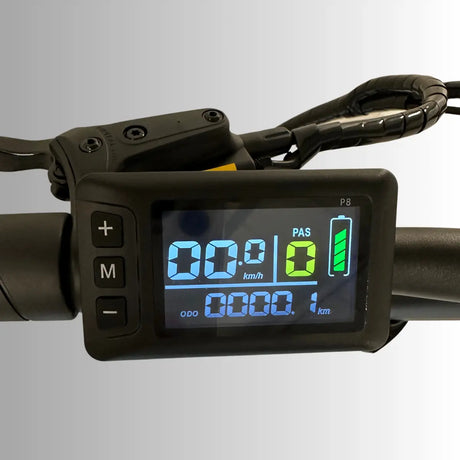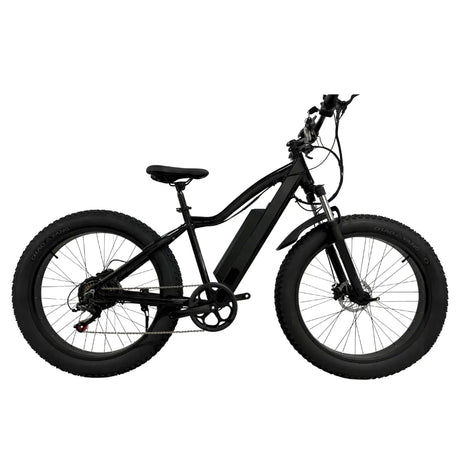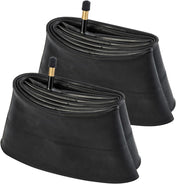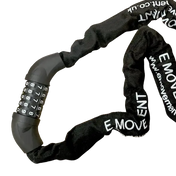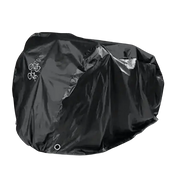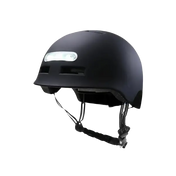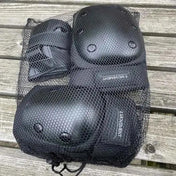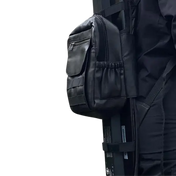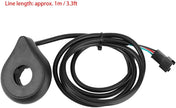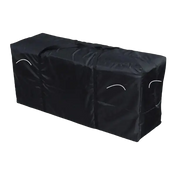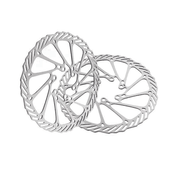Imagine having a bike that gives you a helpful push when the riding gets tough. That’s what electric bikes do! These bicycles are packed with extra power due to an electric motor, making climbing hills and riding through tough terrain much easier and more fun. Electric mountain bikes (eMTBs), in particular, are designed to let you tackle hilly terrains.
Characterised by large, responsive tyres and sleek geometry, e-MTBs are incredibly popular among e-bike enthusiasts. Keep reading as we delve into everything you need to know about these mountain e-bikes and which one to choose for your adventures.
I. Understanding eMTB Basics
Navigating the world of e-MTBs is a journey filled with discovery and excitement. We’ll start by explaining how these eco-friendly two-wheelers work and what sets them apart from traditional mountain bikes.
A. Differentiating Electric Mountain Bikes from Traditional Mountain Bikes
When it comes to biking, comparing mountain e-bikes with traditional ones is like distinguishing between classic cars and modern hybrids . Both have their unique charm and core functionalities, but e-MTBs offer an extra layer of assistance and possibilities.
While traditional bikes rely solely on the rider’s muscle power, e-MTBs introduce electrical assistance to add versatility and accessibility to the riding experience. They allow a broader pool of enthusiasts to engage with mountain biking, promoting inclusivity and expanded adventure horizons. Additionally, the essence and excitement of the traditional biking experience are still preserved if you choose an electric mountain bike.
B. How Mountain eBikes Differ from Other Electric Bikes
Electric mountain bikes offer better control than standard ebikes due to their frame geometry designed to be more stable on inclined, rugged surfaces, providing a more upright riding position.
They are also heavier with sturdier components and frames for rugged terrain usage. For example, road e-bicycles are typically more streamlined and lightweight, so that they are easier to carry or transport when necessary. However, this also makes them slippery and wobbly when the pathway isn’t paved. Mountain e-bikes with their sturdier components, low centres of gravity, and large, responsive heavy-duty tires are designed to conquer off-road trails.
II. The Riding Experience
An eMTB has the ability to transform the ordinary into extraordinary, offering a unique and exhilarating riding experience.
A. Climbing and Descending: eMTBs vs. Conventional Bikes vs Regular Electric Bikes
Each type of bike, from electric MTBs to conventional and regular electric bikes, brings its own flair and set of experiences to cycling adventures. Here, we’ll unravel the specifics of climbing and descending on these different types of bicycles.
1. e-MTBs
Most mountain ebikes boast fat tyres whose wider profile ensures the perfect balance between agility and robustness, providing stellar grip and responsiveness when climbing hills and other steep trails. This enhanced stability provides the bike with a low centre of gravity for a smooth and comfortable ride. They have powerful shock absorbers, ensuring smooth, vibration-free rides that keep you safe and comfortable on sharp turns and rocky paths
Their powerful brakes, heavy build, and grip also ensure you can descend in a safe, controlled manner.
2. Conventional Bikes
Conventional bikes represent the essence of cycling, offering a direct pedal-to-terrain experience and relying solely on the rider’s physical skills:
- Climbing: If you’re looking for an authentic riding experience, conventional bikes are the way to go. Although they demand more physical exertion and technique, regular bikes instil a sense of accomplishment in riders for their purely human-powered ascents.
- Descending: Descending on conventional bikes requires a heightened level of skill and caution. The absence of motor assistance means you have to rely solely on gravity and pedalling techniques for managing speed and control throughout the descent.
3. Regular Electric Bikes
Regular electric bikes serve as a hybrid, blending features from conventional and electric mountain bikes:
- Climbing: Standard e-bikes offer a blend of motor assistance, leading to easier climbs. However, their design is not specifically optimised for off-road conditions. They tend to have thinner tyres that are great for paved roads but less effective in providing grip and cushioning on rough trails. Additionally, the placement of the motor and battery may not lower the vehicle’s centre of gravity, negatively affecting the bike’s balance on uneven terrains.
- Descending: With a motor to slightly ease the effort, descending on regular electric bikes is more manageable than conventional bikes. Still, regular e-bike motors offer steadier, less variable assistance which might not adapt quickly enough to changing off-road conditions. And since weight distribution isn’t focused solely on ensuring smooth manoeuvrability, it can cause riders to lose control over rough terrains and fall over.
B. Manoeuvring through Different Terrains and Trails
Exploring various terrains and trails is a significant aspect of the biking adventure. Let’s now consider how different bikes adapt and perform across multiple terrains, be it rugged mountain paths or smooth park trails.
1. eMTBs
Equipped for excellence, electric MTBs are fine-tuned to steer through diverse terrains with ease:
- Rocky and Uneven Terrains: Mountain e-bikes triumph over rocky and uneven terrains using a combination of robust suspensions and powerful motors. Their suspension systems absorb significant shocks and impacts, enabling smooth navigation over rocks and bumps. Simultaneously, their powerful motors offer enhanced torque and adaptability, so that the bike can maintain momentum and stability even on the most rugged paths.
- Muddy and Slippery Trails: An electric MTB’s wide, knobby tyres and adaptive motor assistance help handle muddy and slippery trails with finesse. These tyres enhance the bike’s grip and traction, preventing slips and falls in muddy conditions. In combination with the motor’s adaptive assistance, which delivers power output based on terrain, e-mountain bicycles maintain balanced and controlled performance.
- Steep Inclines and Sharp Descents: Mountain e-bike designs include advanced braking systems for sharp descents, paired with optimised gear ratios. For descents, hydraulic brakes provide reliable stopping power, while the gear ratios enable precise speed control. This way, riders can always enjoy safety and stability on steep terrains.
2. Conventional Bikes
Traditional bikes, while versatile, do face challenges in navigating certain terrains due to limitations in their design and features:
- Rocky and Uneven Terrains: This type of bike typically lacks the specialised suspensions found in mountain electric bikes, making it challenging to absorb the shocks and bumps encountered on rocky and uneven terrains. The absence of a powerful motor also means that riders have to rely solely on their pedalling power, which can be exhausting and less effective on such tough terrains.
- Muddy and Slippery Trails: Traditional bikes generally come with narrower tyres that have less aggressive tread patterns. Consequently, they are less capable of providing the necessary grip and traction needed on muddy and slippery trails, and riders are more likely to slip. As for the lack of motor assistance? You might find it challenging to maintain a consistent speed and balance and will experience a less secure ride unless you’re an expert.
- Steep Inclines and Sharp Descents: During sharp descents, traditional bikes rely on manual braking without the added advantage of advanced, hydraulic braking systems. This makes controlling your speed on uneven paths difficult. Additionally, the gear ratios on conventional bikes might not be as optimised for such extreme terrains, limiting the rider’s ability to adapt to various inclines and descents effectively.
3. Regular Electric Bikes
Regular electric bikes are a step ahead of traditional bicycles due to their motor assistance, but they might not be able to overcome every obstacle when ridden on tough terrains. Here are some reasons explaining their limitations on specific terrains:
- Rocky and Uneven Terrains: These bikes often incorporate suspensions that are not fully equipped to handle intense shocks and vibrations on rocky terrains. While they do have electric motors, standard e-bikes are usually designed for general commuting and may not provide the robust power and torque required to navigate rugged paths effortlessly. Riders might struggle to maintain steady momentum and control on such terrains.
- Muddy and Slippery Trails: On muddy and slippery trails, regular e-bicycles face difficulties due to their typical slick tyre designs. Such tyres are not optimised for off-road grip and traction. Sure, their motors provide assistance, but they aren’t as adaptive or responsive as an eMTB’s in these conditions. This lack of adaptability can make you more prone to slipping or getting stuck in muddy patches.
- Steep Inclines and Sharp Descents: While standard electric bikes come with motor assistance that helps in climbing, they might not be as efficient on steep inclines because the motor isn’t powerful enough or lacks the necessary torque. Their electronic braking systems are also not as responsive or advanced as those on e-mountain bikes, affecting the bike’s ability to navigate sharp descents safely.
III. Types and Categories of eMTBs
Electric mountain bikes are available in several categories and types, each uniquely tailored to cater to specific riding styles and terrains. Here are some frames you should know about before purchasing one:
A. Cross-Country (XC) eMTBs
Cross-country eMTBs are swift and agile, primarily designed for fast and extended riding over diverse terrains:
- Efficiency: Built with a special focus on maximising efficiency and speed, XC e-mountain bikes feature enhanced motor assistance and sophisticated power transfer capabilities. These features work together to reduce the rider’s pedalling effort, ensuring uninterrupted performance and reduced fatigue over extensive riding distances.
- Lightweight : XC eMTBs benefit from a lighter frame that promotes ease in climbing and increased responsiveness when steering through narrow trails. The lightweight design contributes to the bike’s overall manoeuvrability, which allows for a swift and precise riding experience.
- Terrain Adaptability: This type is designed for adaptability and is capable of smoothly transitioning between different terrains. Whether navigating smoother surfaces or tackling moderately rugged trails, the XC eMTB’s build and features enable it to maintain stellar performance and riding comfort.
B. Trail eMTBs
This type is a versatile all-rounder that can cover a broad range of terrains with ease and competence :
- Versatility: Trail mountain e-bikes are known for their versatility, enhanced through features such as multi-tread tires suitable for various surfaces and a flexible suspension system to effectively absorb shocks. From paved roads to rugged trails, you can enjoy a smooth journey wherever you go.
- Balanced Geometry: Integrating a balanced geometry design, a trail eMTB’s frame evenly distributes a rider’s weight. The riding posture is also optimal and comfortable due to the strategic seat position and handlebar alignment, facilitating exploration into new and unique regions with ease.
- Adaptive Performance: Adaptive performance in these mountain electric bikes is driven by a combination of powerful motors and batteries that seamlessly adjust power output based on terrain. This allows trail e-bikes to improve performance and ensure coordinated execution of all components during climbs and descents.
C. Enduro and All-Mountain eMTBs
Enduro and All-Mountain eMTBs are built to conquer challenging terrains, steep descents, and technical trails with the following features:
- Robust Build: It’s in your best interest to opt for this frame if you often encounter aggressive terrains because they are heavier and sturdier than most bicycles. Their robust build contributes significantly to their stability and resilience, enabling them to overcome challenging landscapes with ease.
- Powerful Suspension: With advanced suspension systems, enduro bikes excel in absorbing shocks and impacts, ensuring a smoother ride in rough conditions.
- Technical Proficiency: Enduro and All-Mountain eMTBs are ingrained with features that enhance technical proficiency, such as optimised geometry, responsive brakes, and adaptive motor assistance. These elements combine to empower riders with the necessary confidence to execute drops and navigate steep descents with precision and assurance.
D. Fat-tyre eMTBs
As they are known for their solid, fat tyres, such bikes open doors to unprecedented terrains and experiences:
- Traction and Stability: The wide tires provide exceptional traction, making them suitable for loose, soft, or slippery terrains such as snow, sand, and mud.
- Comfort: Fat-tyre electric bikes also offer enhanced comfort by smoothing out bumpy trails and absorbing minor vibrations and shocks.
IV. Purchasing Considerations
When you make the decision to own an e-mountain bicycle, you’ll have to consider several factors. This includes determining your price range and whether you want to opt for a new or used option. Additionally, we recommend researching your chosen brand’s warranty policy and after-sales support to make an informed decision.
A. Price Ranges and What to Expect
In the diverse market of mountain e-bikes, understanding the available price ranges is crucial for managing your expectations regarding features, quality, and performance:
- Budget Options (less than £1,200: Entry-level options offer basic functionalities and features, making them suitable for beginners or light trail riding.
- Mid-Range (£1,500 – £3,500): Since these bikes provide a more enhanced riding experience, they cost more due to advanced features and improved performance.
- High-End (£3,500 and above): High-end electric MTBs promise a premium riding experience with top-tier technology, exceptional features, and robust performance capabilities.
B. New vs. Used: Weighing the Options
Embarking on the electric mountain bicycle ownership journey requires deciding between buying a new bike and going for the potential value found in used options:
- New Bikes: New bikes come with the latest features, full warranties, and the assurance of quality, but they are likely to cost more.
- Used Bikes: While used e-mountain bikes help save money and potentially offer better value for money, factors like wear and tear, and battery health, are significant factors that riders should think about.
You can check out our ex-demo and display range if you want second-hand electric bikes used under our supervision. They also come with warranties!
C. Warranties and After-sales Support
Warranties and after-sales support play a significant role in safeguarding your investment:
- Manufacturer’s Warranty: A new bike typically comes with a manufacturer’s warranty, covering various components and offering peace of mind.
- Dealer Support: Choosing dealers who provide after-sales services like repairs and maintenance is crucial for your mountain electric bike’s longevity and performance.
- Extended Warranties: If available, it’s in your best interest to purchase an extended warranty to protect your investment for a longer period of time.
V. UK’s Leading Electric Mountain Bike Models
In this section, we’ll introduce you to E-movement’s mountain electric bikes that feature a hardtail suspension, incredible builds, and large, responsive tyres. Don’t hesitate to gear up for adventure, as we promise improved traction and better balance with our stylish mountain e-bike options:
- Lightweight Hybrid – Thor
Thor is one of our e-MTBs, laden with specs that make it an attractive choice for both roads and off-road trails. Its mountain bike frame incorporates hybrid capabilities, available in four colours and parts from Bafang, SRAM, and RST.
This bike’s hybrid Maxxis tyres ensure a solid grip on every terrain, enabling you to tackle diverse landscapes with confidence and ease. Additionally, it has a lightweight build and weighs only 22 kg for enhanced control and a secure ride.
- Classic Fat Tyre e-Mountain Bike – Thunder
As an E-movement bestseller, the Thunder mountain e-bike integrates a hardtail frame with 27×4-inch responsive fat tyres and spectacular components and specs. You can enable or disable the throttle through the display for extra power depending on your preferred terrain and needs.
At the core of our Thunder lies its adaptability. Whether navigating city streets or wild mountain hills, this bike will be your trusty companion that can be ridden everywhere. Since it combines agility and power, every ride is an adventure waiting to be discovered. You can get it in Sand, Dune, and Black colours.
- Step-Through Mountain eBike – Aries
While the Aries is similar to the Thunder electric bike, it is more suitable for those looking for both adventure and inclusion. With a V-shape low step-through frame, riders don’t have to deal with the hassle of mounting and dismounting or flexibility concerns. The Aries asserts its dominance with its exceptional 27-inch fat mountain bike tyres, providing responsiveness and absorbing shocks to elevate any riding experience.
Featuring a large 14Ah battery and a disconnectable throttle in the 250W road-legal motor variant, riders are bound to enjoy smooth and comfortable rides if they opt for this e-mountain bicycle.
5. 20-Inch Off-Roading eBikes
If you’re a fan of chunky bikes with 20-inch tyres, you can check:
- Panther – full suspension and folding
- Pixie – step-through, hardtail, and folding
- Raven – long-range and step-thru
VI. Ethical and Environmental Implications
Although setting off on rides on your mountain e-bike entails adventure and excitement, riders have certain ethical and environmental responsibilities. As the world increasingly adopts sustainable transportation modes, understanding the ecological footprint of mountain e-bikes and promoting responsible riding practices is crucial for both the environment and the biking community.
Trail Access and Responsible Riding Practices
Responsible riding goes beyond personal safety and enjoyment, extending to the preservation of trails, respect for community guidelines, and the environment:
- Trail Preservation: Riding on authorised trails and following rules helps in maintaining trail integrity, and preventing erosion and disturbance to wildlife.
- Community Respect: You should share trails respectfully with other users, be it hikers, horseback riders, or fellow bikers. This helps develop a sense of community and mutual respect.
- Legal Guidelines: It’s crucial to understand and comply with local and national regulations regarding electric mountain bike usage, including speed limits and authorised locations. Doing so ensures ethical riding practices and promotes the positive integration of electric MTBs within outdoor recreational spaces.
VII. Legal and Regulatory Considerations
Riding an electric mountain bike in the UK is a fantastic experience, but it’s essential to understand where you can ride and the rules you need to follow to enjoy your rides responsibly and lawfully.
A. Understanding Where eMTBs Are Allowed in the UK
Different paths and areas have various rules in the UK. As a general rule, you are allowed to take road-legal Electric bikes anywhere you can take a regular cycle. However, if your e-bike has a motor power of above 250 watts and/or a throttle, it classifies as a moped and has different rules associated with it.
- Bridleways and Byways: These are generally good options for riding your electric mountain bike. However, always look out for signs or local guidelines that might have specific rules or restrictions.
- Cycle Paths : Some cycle paths welcome e-mountain bicycles, but this doesn’t apply to all of them. Before you head out, it might be a good idea to check local council websites or ask at local bike shops to make sure where your vehicle is allowed.
- Restricted Areas: Certain areas, particularly footpaths and pedestrian zones, often prohibit eMTBs. Ensuring you’re aware of these restrictions helps avoid breaking the law unintentionally.
B. Navigating Through Various Legal Restrictions
There are specific legal considerations you should know to guarantee your mountain biking adventures comply with UK regulations .
- Power and Speed: In the UK, mountain electric bikes are limited to a motor output of 250 watts, and the motor should stop pedal-assisting when the bike reaches 15.5 mph. If you stay within these limits, you are bound to be riding legally and safely.
- Age Restrictions: eMTB riders need to be at least 14 years old. This rule helps ensure that riders have a basic level of experience and maturity to handle the bikes safely.
- Equipment and Safety: Equipping your bike with essential safety features, like bells and lights, is not just good practice; it’s a legal requirement. Wearing a helmet is also strongly advised to enhance safety.
VIII. Tips for Buying the Right eMTB
Undoubtedly, purchasing an electric MTB is a significant investment, which means that making an informed decision is crucial to finding a bike that suits your needs and delivers an outstanding riding experience. Here are some tips to help make the entire process easier for you:
A. Assessing Individual Needs and Riding Style
Determining your personal needs and how you plan to utilise your vehicle is the foundation of a wise purchasing decision:
- Experience Level: Whether you’re a beginner or a seasoned rider will influence your choice. Beginners might look for bikes with more straightforward controls and functionalities, while experienced riders may seek advanced features and capabilities for a challenging and exhilarating ride.
- Usage: Consider if you will use the bike for rugged mountain adventures, daily commuting, or leisurely rides. Align the bike’s design and features with your preferences to elevate your riding experience.
- Physical Fitness: Your fitness level directly impacts the type of ebike that will suit you best. Heavier, more powerful bikes might be more demanding but offer more robust features. In contrast, lighter models are easier to handle and manoeuvre.
B. Considering the Type of Terrains You Will Be Riding On
A mountain e-bike’s design and features should match the terrains you wish to conquer for smooth and efficient performance:
- Mountain Trails : For tackling rugged paths, look for an electric MTB that boasts a durable build, robust tires, and enhanced suspension systems, as this frame will ensure resilience and performance in challenging conditions.
- Urban Commutes: If you have to frequently use the city streets, opt for a bike with agility, comfort, and smooth operational features. This will make navigating through traffic and pathways seamless and enjoyable.
- Versatile Ventures: We recommend purchasing a versatile mountain electric bicycle in the case that you wish to ride over various terrains. These bikes provide adaptability and control across diverse riding conditions.
C. Evaluating Battery Life and Motor Efficiency
The battery and motor are crucial components that dictate an e-mountain bike’s performance and usability:
- Distance and Range: Buy an e-bike that incorporates powerful batteries, as this promises extended range for longer adventures. You won’t have to worry about getting stranded in the middle of nowhere.
- Motor Power: A powerful motor is a trusted companion in challenging terrains, enabling effortless climbs and enhancing the bike’s overall performance.
- Convenience : Consider the battery’s recharge times and the motor’s efficiency because these aspects influence the bike’s readiness and usability. Most mountain bike enthusiasts obtain peace of mind knowing that their vehicle is always ready for spontaneous journeys.
D. Understanding the Importance of a Suitable Suspension System
An efficient suspension system guarantees a smooth and responsive riding experience:
- Sophisticated Suspension: If you’re seeking enhanced comfort for overcoming rough terrains, look for electric MTBs with advanced suspension systems. Not only do they absorb bumps and vibrations effortlessly, but they also help navigate the challenges of off-road adventures with ease.
- Customization: A customizable suspension system allows for quick adaptability in different areas, enabling a tailored riding experience that aligns with the demands of each adventure.
- Maintenance Insight: Being well-versed in the maintenance requirements of your mountain electric bike’s suspension system ensures its longevity and maintains the vehicle’s performance.
IX. Conclusion
Exploring the realm of e-MTBs is an adventure filled with exciting choices. These dynamic bikes bring a fresh twist to traditional mountain biking, opening doors to undiscovered trails and terrains. Whether conquering steep hills to cruising through rugged terrains, the enhanced features and functionalities of eMTBs promise a riding experience that’s nothing short of extraordinary.
From understanding the bike’s anatomy to considering the various types and categories, each aspect plays a vital role in guiding your decision. Your selected mountain electric bike should not just be a purchase, but a companion that perfectly aligns with your adventures and riding style.
X. FAQs
A. What is the average battery life of an eMTB?
The average battery life of an eMTB varies based on its type and usage. Generally, a fully charged eMTB battery can last anywhere from 30 to 130 kms. Factors such as the bike’s motor efficiency, the terrain, and the rider’s style and weight also influence the battery’s performance and longevity.
B. How does weather affect electric mountain bike performance?
Weather can impact the performance of mountain e-bikes. Cold temperatures may reduce battery efficiency, and excessive moisture can affect electrical components. However, most eMTBs are designed to withstand typical weather conditions encountered during riding, but it’s always best to consult the manufacturer’s guidelines for specific care and maintenance related to weather.
C. Are there specific trails that are best for eMTBs?
Certain trails are more suited to mountain electric bikes due to their design and terrain. Trails with moderate elevations, wide paths, and a mix of terrains offer a good balance for eMTB capabilities. However, always ensure that your bike is permitted on the trails, as some areas have restrictions on motorised bikes.
D. What are the maintenance costs associated with eMTBs?
Maintenance costs for eMTBs can vary based on usage, model, and the rider’s maintenance practices. Regular maintenance such as tire pressure checks, brake inspections, and battery care are essential for your vehicle’s longevity. For more technical aspects like motor servicing and suspension checks, you may require professional servicing which can incur additional costs.

